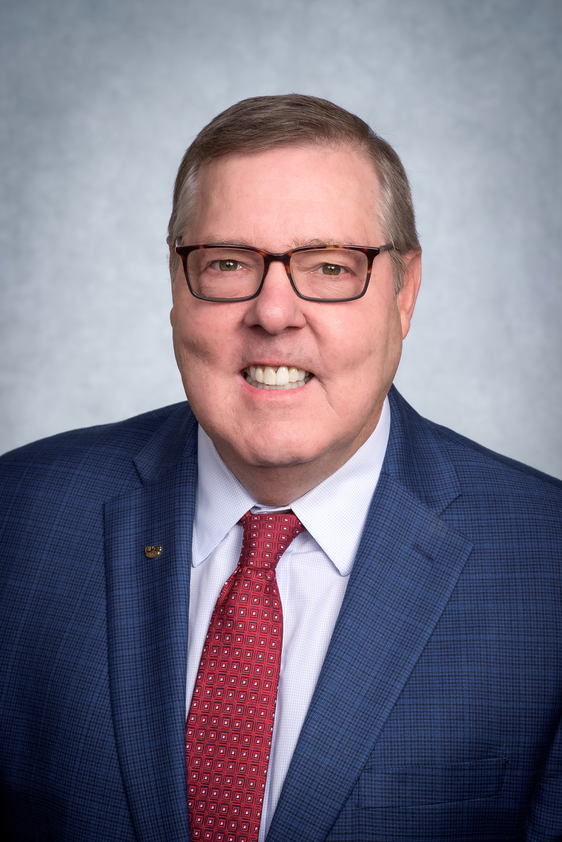 Peter Anderson, D.V.M., Ph.D., a professor in the Division of Molecular and Cellular Pathology, will retire at the end of the month, December 31, 2024, after 43 years in the UAB Department of Pathology.
Peter Anderson, D.V.M., Ph.D., a professor in the Division of Molecular and Cellular Pathology, will retire at the end of the month, December 31, 2024, after 43 years in the UAB Department of Pathology.
Anderson earned his Doctor of Veterinary Medicine from Washington State University in 1981 before completing a Veterinary and Comparative Pathology Residency Program, a joint residency between UAB and Auburn University. Upon completion in 1984, Anderson pursued a post-doctoral fellowship in UAB’s Mechanism of Hypertension Program. In 1986, he earned his Ph.D. in Experimental Cardiovascular Pathology from UAB before joining the Department of Pathology as faculty.
A prolific researcher, Anderson maintained an NIH-funded research program for 20 years. His research expertise is focused on cardiac hypertrophy, atherosclerosis and intravascular stents. Anderson has published more than 100 peer-reviewed publications, upholds an outstanding H-index of 40 and has been cited nearly 8,000 times. His research career has resulted in 7 patents, one of which was purchased by Boston Scientific to develop a drug-coated stent. This stent design has been used to treat thousands of cardiac disease patients. Anderson donated proceeds from this patent to fund the Robert and Ruth Anderson Endowed Chair in Pathology, named in honor of his parents, Reverend Robert Anderson Jr. and Ruth Anderson. In 2023, he was inducted into UAB’s chapter of the National Academy of Inventors.
“Dr. Anderson has been a decades-long important contributor in both our research and education missions,” said Ralph Sanderson, Ph.D., Professor Emeritus and previous Division Director of Molecular and Cellular Pathology. “Early in his career he made seminal contributions related to cardiovascular health and has also had a long-term impact on medical education for which he is internationally known.”
Anderson has been an impactful educator at UAB since 1984 when he taught his first course for medical students. He has taught every class of medical students since. He received the Best Course Director Award at the first UAB Argus Awards ceremony in 1996 and has won many more since then. In 2003, Anderson received the Presidents’ Award for Excellence in Teaching and in 2009, he received the Ellen Gregg Ingalls/UAB National Alumni Society Award for Lifetime Achievement in Teaching. He was the first faculty member from the Heersink School of Medicine to receive the AOA-AAMC Glaser Award given to the best medical educator in the US and Canada. He received the American Society for Investigative Pathology Stanley Robbins Distinguished Educator Award and the Raible Distinguished Teaching Award in Undergraduate Medical Education from the Association of Academic Pathology. He has been recognized for his excellence in teaching for the entirety of his career, and recently received the 2021 Dean’s Excellence Award in Teaching. In 2023, Anderson was elected as one of the most accomplished educators in the specialty of pathology and laboratory medicine and was chosen to serve as part of the inaugural class of Distinguished Pathology Educators by the Association of Pathology Chairs.
Anderson has made significant contributions to the field of pathology education. He received the Edithe J. Levit Distinguished Service Award at the 2022 Annual Meeting of the National Board of Medical Examiners in recognition of 20 years of dedicated service to the organization. He developed one of the earliest websites for medical education digital resources, the Pathology Education Instructional Resource (PEIR), in 1999. The website boasts more than 40,000 digital teaching images, online virtual microscopy and hundreds of teaching cases that are utilized by students and faculty worldwide. The availability of this global resource contributed to Anderson’s appointment as a Fullbright Senior Scholar in Medical Education Curricular Development from 2009 to 2014. During this time, Anderson visited numerous medical schools in Africa and Taiwan to demonstrate the use of digital resources to support their teaching programs.
“Dr. Anderson is internationally recognized for his contributions in cardiovascular research and pathology education,” said Rakesh Patel, Ph.D., Division Director, Molecular and Cellular Pathology. “His research has led directly to the development of drug-coated stents for the treatment of coronary artery disease, and he is widely acknowledged for developing one of the earliest and most comprehensive digital image libraries for pathology education that has been used by universities across the world. As one of the longest serving faculty in the Department of Pathology, I want to take this opportunity to thank Pete for all his contributions that have helped the Division of Molecular and Cellular Pathology grow and thrive over the last three decades.”
After retiring, Anderson intends to remain active by working part-time on research collaborations, teaching, mentoring, and overseeing the PEIR website. He also looks forward to dedicating more time to his family and embracing his cherished role as "PapaDoc" to his grandchildren.
"Pete is not a teacher, he is an educator! I have been extremely fortunate not only to watch him teach, but to teach alongside him," said Eason Hildreth, Ph.D., Assistant Professor, Molecular and Cellular Pathology. "When I think about Pete as an educator, I always think of three qualities he possesses. First, he has the often underappreciated ability to break a very complex concept down to its root and then build it back piece by piece in a way that everyone understands. Second, he always knows his audience and he adjusts his teaching to what they know. Third, the students trust Pete. They feel comfortable in his lectures. Often, the questions and discussions become pretty amazing because he creates an open, judgement-free environment. Pete is on my Mount Rushmore. He is going to be missed."